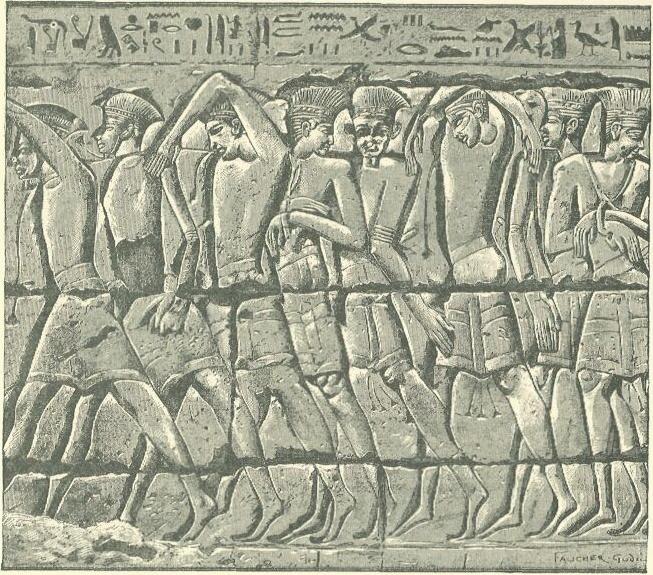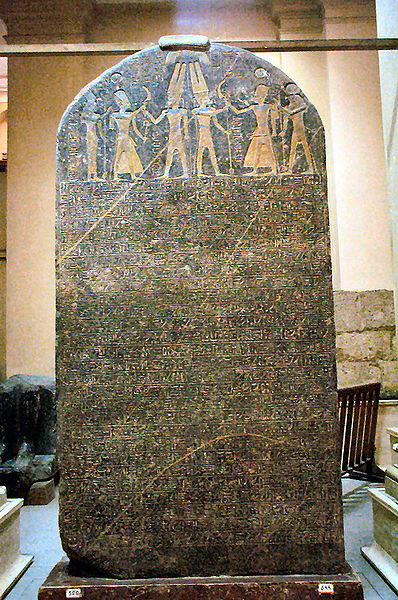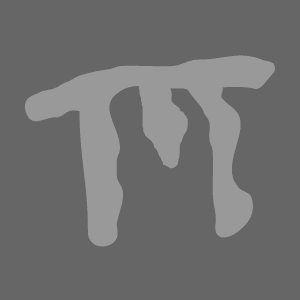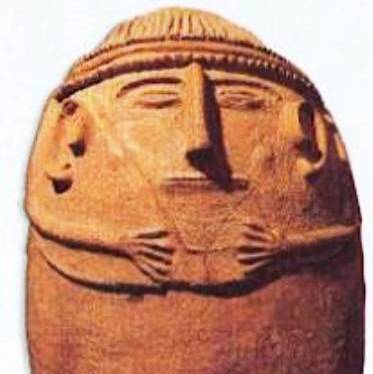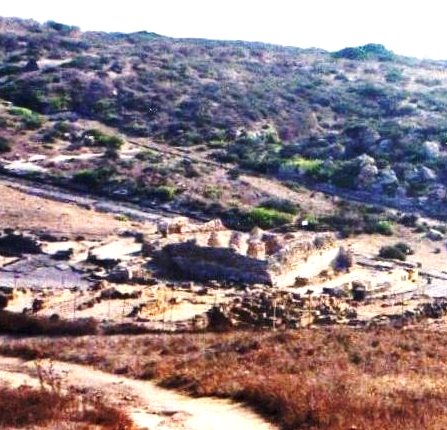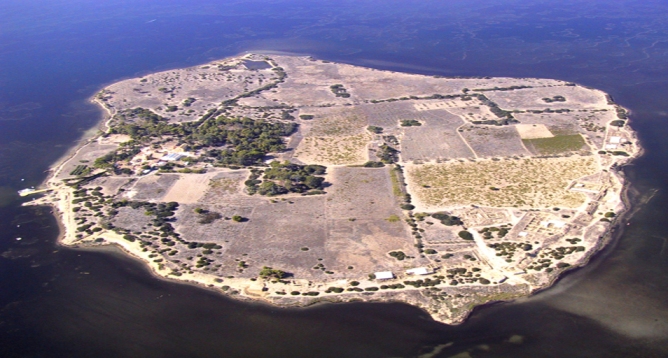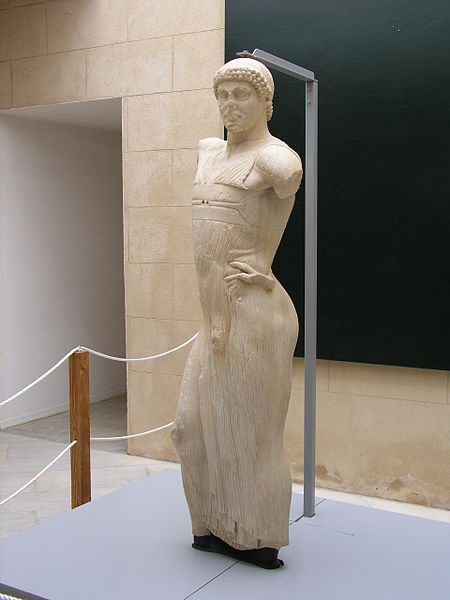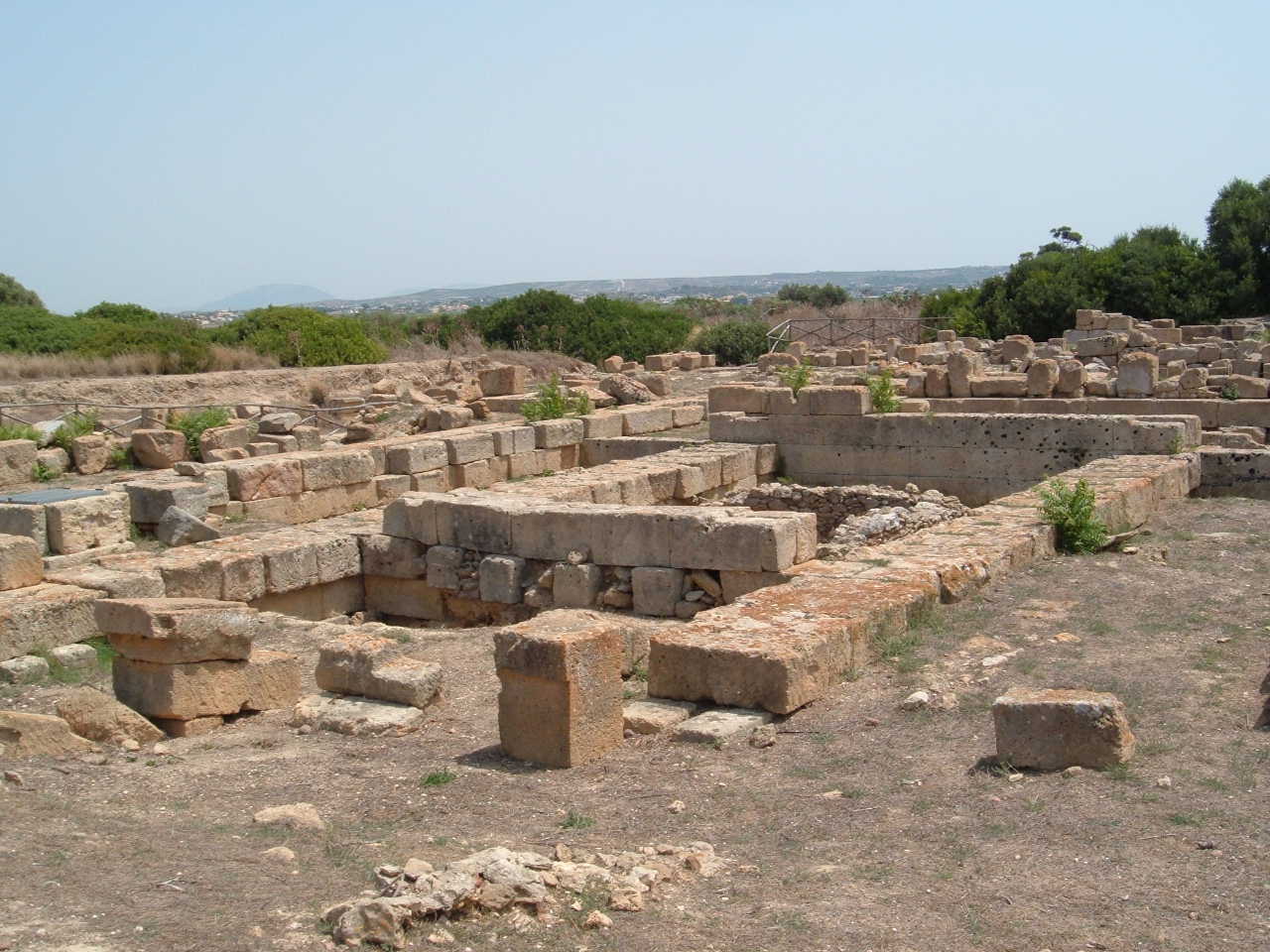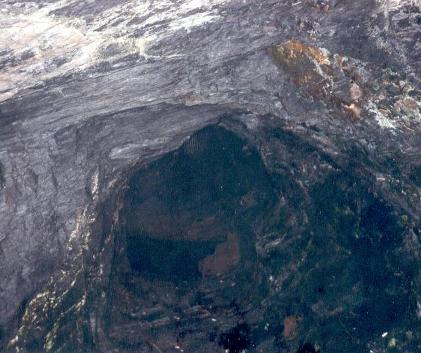|
The literature shows a strong link between the Anatolian Tarsus (the
biblical Tarsish ) and the Phoenician Tyre.
The same connection can be found between Tyre and the Sardinian Tharros.
Around
750 BC, in fact, the Phoenicians
of Tyre founded a
new settlement, after a
period of desert with no
obvious archaeological traces
probably due to the
emigration of its previous inhabitants
to other more favorable
places
(Tuscany ?).
The
identity of the etymological root of Tarsus, Tarsish , Tursha and
Tharros and the cultural and commercial linking exercised by the Phoenicians
of Tyre between the two cities, suggests the identification, relating to the Sardinian
city (Tharros)with the
legendary Tartessos (Tarthessos), an area rich in silver mines,
located beyond the pillars of Hercules, in commercial relations with
the Phoenicians .
This
is only possible if the original location of the Pillars of Hercules
were in the Sicilian Channel and not in Gibraltar, as indicated by
Eratosthenes of Cyrene, in the first century
BC.
This
hypothesis launched by journalist Sergio Frau, seems to have been
welcomed by important archaeologists such as the Italian-Belgian Louis Godart and Italian Andrea Carandini .
Despite the arrival of populations in
possession of the techniques of fusion and manufacture of iron weapons,
in the Italian peninsula and on the islands the beginning of the new
epocal iron is canonically set at 900 BC, that is to say about three
hundred years later than the neighbor Orient.
Furthermore, a substantial substitution of the
material used to make weapons is not visible before the seventh century.
In Sardinia, finally, this delay is even more substantial and,
essentially, it ends only with the arrival and the seizure of power by
the Phoenician-Punic, around the middle of the sixth century.
This is essentially due to the lack of raw
material and probably would confirm that the arrival of the sea Peoples,
especially in Sardinia, preceded the Doric invasion of Greece, carried
out by populations already in full possession of iron weapons.
The situation evolved with the discovery of
substantial iron deposits on the Island of Elba and on the Tuscan hills. The
circumstance cannot have left the community of the Mediterranean peoples
(including Greeks and Phoenicians) indifferent, but, above all, aroused
the interest of the Sardinian populations.
In fact, from the first half of the 9th century,
the well-known Sardinian bronzes appear in Tuscan burials. In particular,
the discovery of numerous zoomorphic protruding ships testify to the
arrival on the Tuscan coast of Sardinian navigators and traders.
In this context, the action of the Tursha
descendants seems to have been predominant. There would be no other
explanation for the change in the denomination of the sea between
Sardinia and the peninsula, already referred to as Okeanòs (Ocean) by
Homer and then "Sardinian Sea", in the Tyrrhenian Sea.
Nor could the name "Tirrenia" be explained,
assumed by the territory between the Arno and the Tiber and that of
"Tirreni" given by the Greeks to the local populations (later
transformed into "Tusci" and, therefore, "Etruscans", by the Romans ).
To credit this hypothesis it must priority condiser that
Homer, in the Odyssey, makes Ulysses navigate the waters of the Okeanos
without
mentionining any crossing of the Pillars of
Hercules by the Mycenaean hero.
This
indicates that the myth of the placement of columns to the limits of
the known world was not referring to Mycenaean Heracles, but the
Phoenycian from Tyre Melqart.
Anyway,
the Ocean described by Homer is easily identifiable with the Tyrrhenian Sea, wetting the island of Circe (the promontory of Circeo), the island of Sirens (Capri) and having as output the
Strait of Messina (Scylla and Charybdis), as well as the
Strait of Sicily.
Right
on the Channel of Sicily, a sea strewn with low and unpredictable
waters of volcanic islands that appear and disappear from the
surface of the water (like the Homeric Wandering islands or the
natant of Aeolus, or even the historic Island Ferdinandèa,
emerged in the nineteenth century from the Phlegraean Fields of
the Sea of Sicily),
Melqart of Tyre, around the eighth century BC, may have placed
its columns, as a warning to mariners of other countries.
Where, in particular?
At Motya: were the pillars of a temple still being excavated, built
by the Phoenicians of Tyre, dedicated to none other than Melqart .
In this regard, there are striking similarities between the myth and
the places in question.
According
to legend, Hercules was in fact came from those parts to
obtain the Cattle of Geryon as his tenth labour required him by Eurystheus.
According to the myth, Geryon lived in a place called Eritheya and
that territory can be identified, according to the etymology with
the surroundings of Erice (Eryx) .
In
particular Geryon lived in an adjacent island called Gadhira.
This name can be translated "wall" in Phoenician but, in
Semitic, it can also mean other things; in particular, in
Maltese, "Għadira" means "pond".
Well , the island of Motya, is located in a lagoon in front of the
territory of Erice (TP), whose actual name is Stagnone (great pond).
Once
killed, the three-headed monster Geryon would originate many
islands, easily identifiable with the three major Egadians Islands in front of the promontory of Erice.
In addition, according to Strabo, an oracle would have ordered the
inhabitants of Tyre to found a colony "at the columns of Hercules".
The
Greek geographer particularly emphasizes the bronze pillars of the
temple, stating that bore important inscriptions and almost causing
the reader to believe that these were just the "pillars of Hercules".
Recent excavations
in Mothya have revealed the
foundations of an important temple of the Tyrians, which could be
the temple of Melqart, with its listed columns.
If, as it seems, the
pillars of Hercules were placed in Mothya and
not in Gibraltar, the legendary Tartessos can be identified with Tharros
and the Teresh, who were its inhabitans
before
the refounding of the city by the Phoenicians of Tyre, can be identified, as
well as the
Tyrrhenians, even with the Tartessos.
In the
surroundings of Tharros, as
in the legendary Tartessos, in fact, are located important silver mines, so much so that
even today a small town about fifty miles as the crow flies is
called Argentiera.
|
